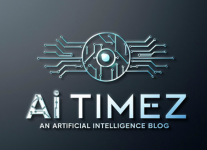Artificial intelligence (AI) is reshaping the creative industry, bringing new tools and opportunities for innovation across art, music, writing and more.
As AI tools become more sophisticated, they enable creators to explore new possibilities, enhance productivity, and redefine traditional artistic boundaries.
Here’s how AI is transforming creativity and what it means for creators worldwide.
What is AI Creativity?
AI creativity involves using algorithms and machine learning to generate, assist, or augment creative works.
From painting and composing music to storytelling and film production, AI-powered tools allow creators to collaborate with technology like never before.
Whether it’s generating stunning visuals using DALL·E or composing symphonies with AIVA, AI creativity is becoming more accessible and impactful.
How AI is Impacting Creative Fields
1. AI in Art and Design
AI has opened up new frontiers in visual arts and graphic design. Tools like MidJourney and DALL·E allow users to turn text prompts into vivid, intricate artworks, often within seconds.
- AI Tools for Artists:
- DALL·E: Generates images from text prompts.
- DeepArt.io: Uses neural networks to replicate artistic styles.
- Applications in Design:
- Graphic designers use AI to create mockups, logos, and marketing visuals, reducing turnaround times significantly.
2. AI in Music Composition
AI has made composing music faster and more accessible, even for those without formal training.
- Top AI Tools in Music:
- AIVA (Artificial Intelligence Virtual Artist): Creates custom music compositions in classical, jazz, and pop styles.
- Amper Music: Helps creators craft tracks by selecting instruments, tempo, and mood.
- Impact on Musicians:
- AI helps musicians experiment with new sounds, refine compositions, and generate background scores for projects.
3. AI in Writing and Storytelling
From brainstorming ideas to generating full-length stories, AI tools like ChatGPT are revolutionizing how writers approach content creation.
- Notable Tools:
- ChatGPT: Generates story ideas, writes drafts, and edits text.
- Sudowrite: Tailored for creative writers, offering enhancements and alternatives to refine narratives.
- Real-World Examples:
- Authors co-writing novels with AI to push the boundaries of storytelling.
4. AI in Film and Animation
AI is reshaping video production and animation, automating complex tasks like rotoscoping and special effects.
- AI-Driven Platforms:
- Runway ML: Offers tools for video editing, text-to-image animation, and visual effects.
- Deepfake Technology: Used in creating realistic character renderings for films and ads.
Advantages of AI in Creativity
1. Speed and Efficiency
AI tools can complete labor-intensive tasks in a fraction of the time, allowing creators to focus on refining their work.
2. Democratization of Creativity
AI tools make high-quality creative tools accessible to amateurs, enabling anyone to produce professional-grade content.
3. New Avenues for Exploration
AI pushes the boundaries of what’s possible by offering new styles, techniques, and perspectives.
Challenges of AI Creativity
1. Ethical Concerns
- Who owns the rights to AI-generated content?
- How do we ensure AI does not infringe on existing intellectual property?
2. Balancing Creativity and Automation
- While AI can enhance creativity, there’s a risk of over-reliance, leading to homogenized, uninspired output.
3. Job Displacement
- Automation in creative industries may replace traditional roles, sparking debates on the value of human input in art and design.
Case Studies: AI Creativity in Action
Case Study 1: AI-Powered Art Exhibition
An exhibition featured paintings generated by GANs (Generative Adversarial Networks), showcasing how machines can mimic and innovate artistic styles.
Case Study 2: AI-Composed Music Albums
Artists have released albums co-composed with AI tools like AIVA, blending machine precision with human emotion.
Case Study 3: AI in Marketing Campaigns
Brands are leveraging AI to create personalized advertising content, including visuals, slogans, and jingles.
Practical Tips for Using AI in Creativity
- Experiment with Free Tools: Many AI platforms offer free versions or trials. Explore tools like Canva, which incorporates AI for graphic design.
- Combine AI with Human Expertise: Use AI for repetitive tasks but let your creativity shine through personal touches.
- Stay Updated on Trends: Subscribe to newsletters or blogs focusing on AI advancements in creative industries.
Future Trends in AI Creativity
- Hyper-Personalized Content: AI will enable the creation of tailored music, art, and stories for individual users
- Ethical AI Development: As the creative AI industry grows, developers will focus on transparency and fairness in algorithms.
- Deeper Human-AI Collaboration: The future of creativity lies in co-creating with AI, blending human emotion with machine precision.
Conclusion: Applying AI for Creative Growth
AI is not a replacement for human creativity but an enabler. By leveraging AI tools, creators can enhance their productivity, explore uncharted territories, and unlock new dimensions of their craft.
The key to success lies in striking a balance—using AI as a partner while preserving the authenticity and originality that define true artistry.
Whether you’re an artist, writer, musician, or filmmaker, embracing AI can elevate your creative potential. Start experimenting with AI tools today to explore a world where technology and imagination unite.

